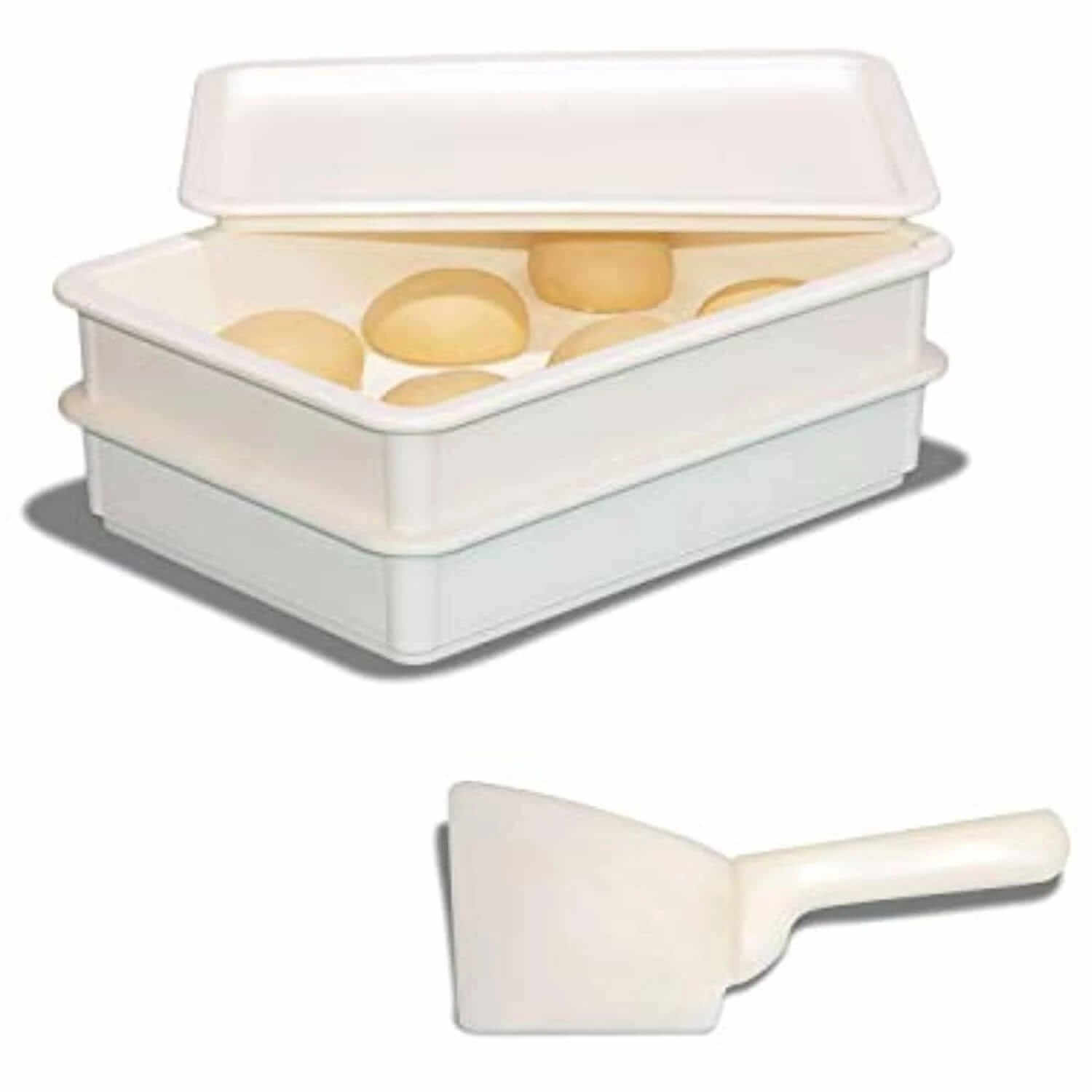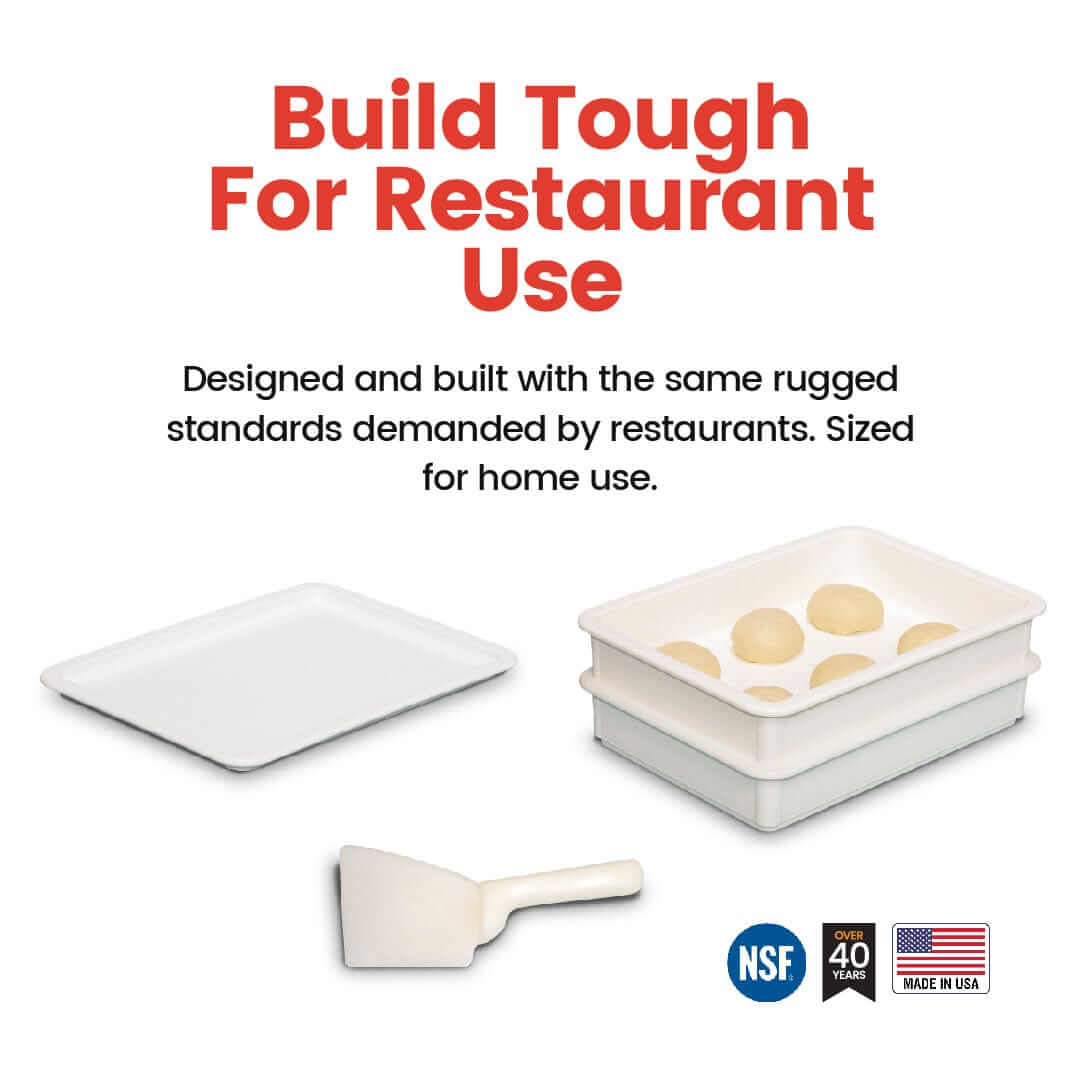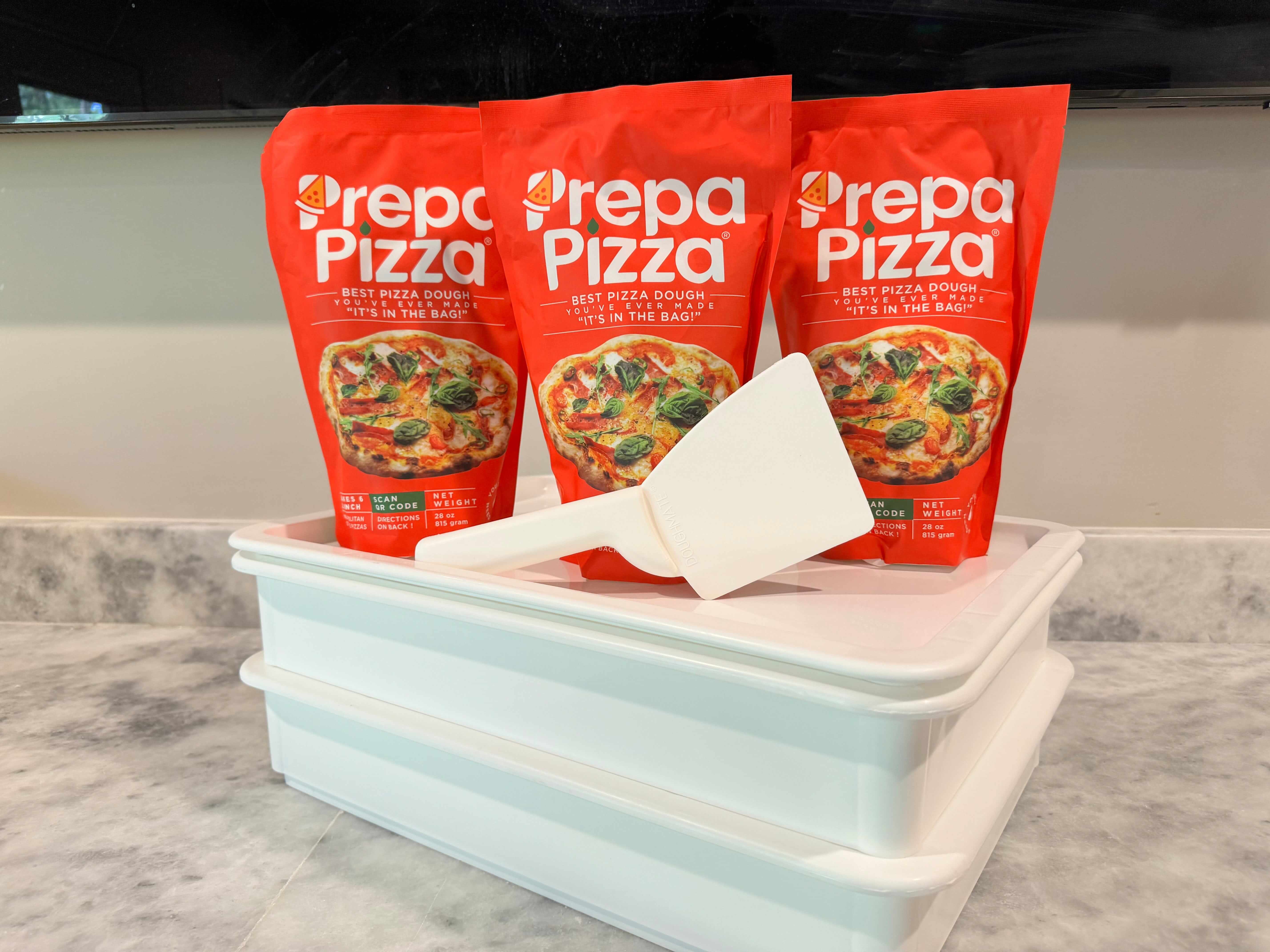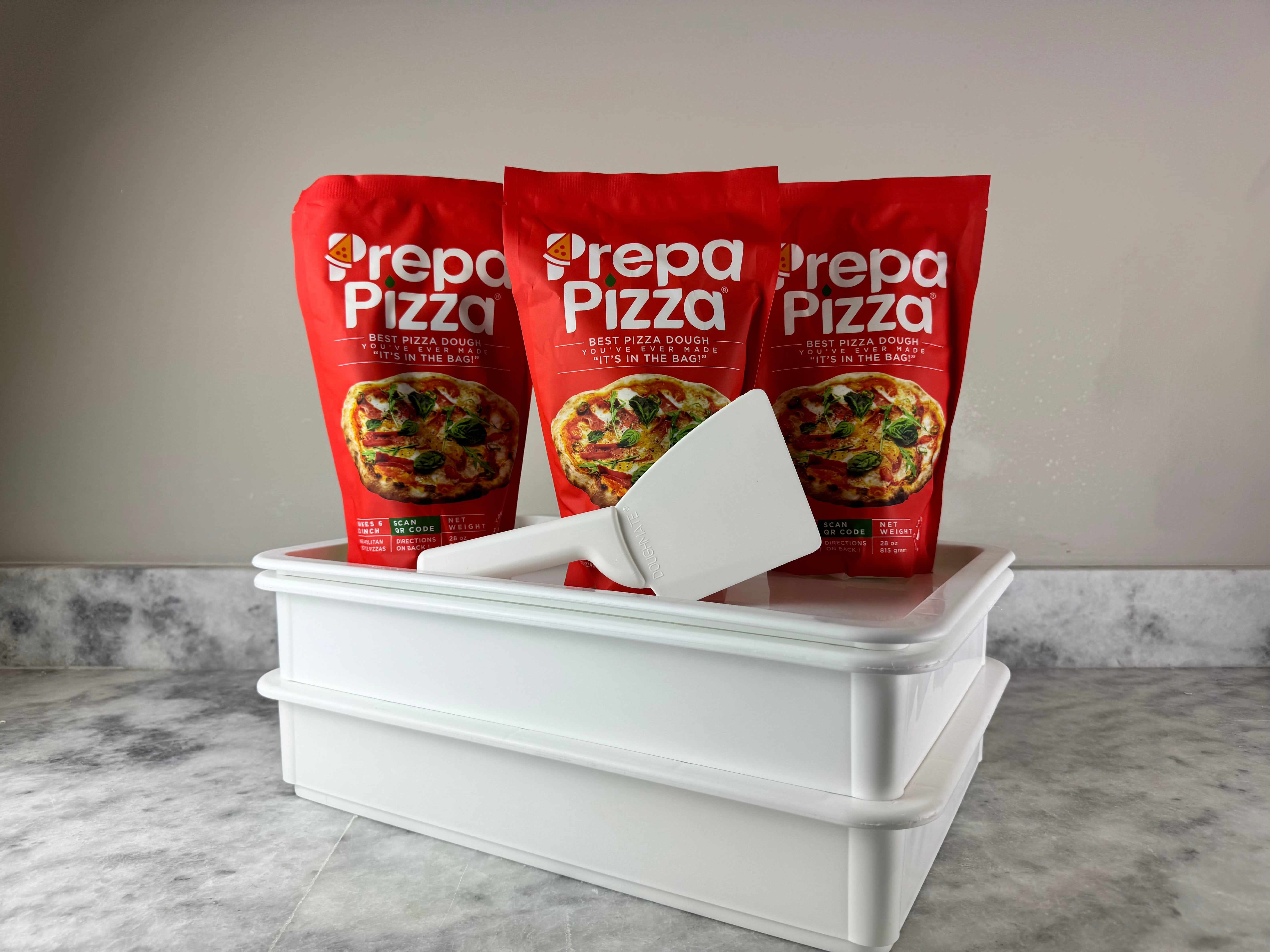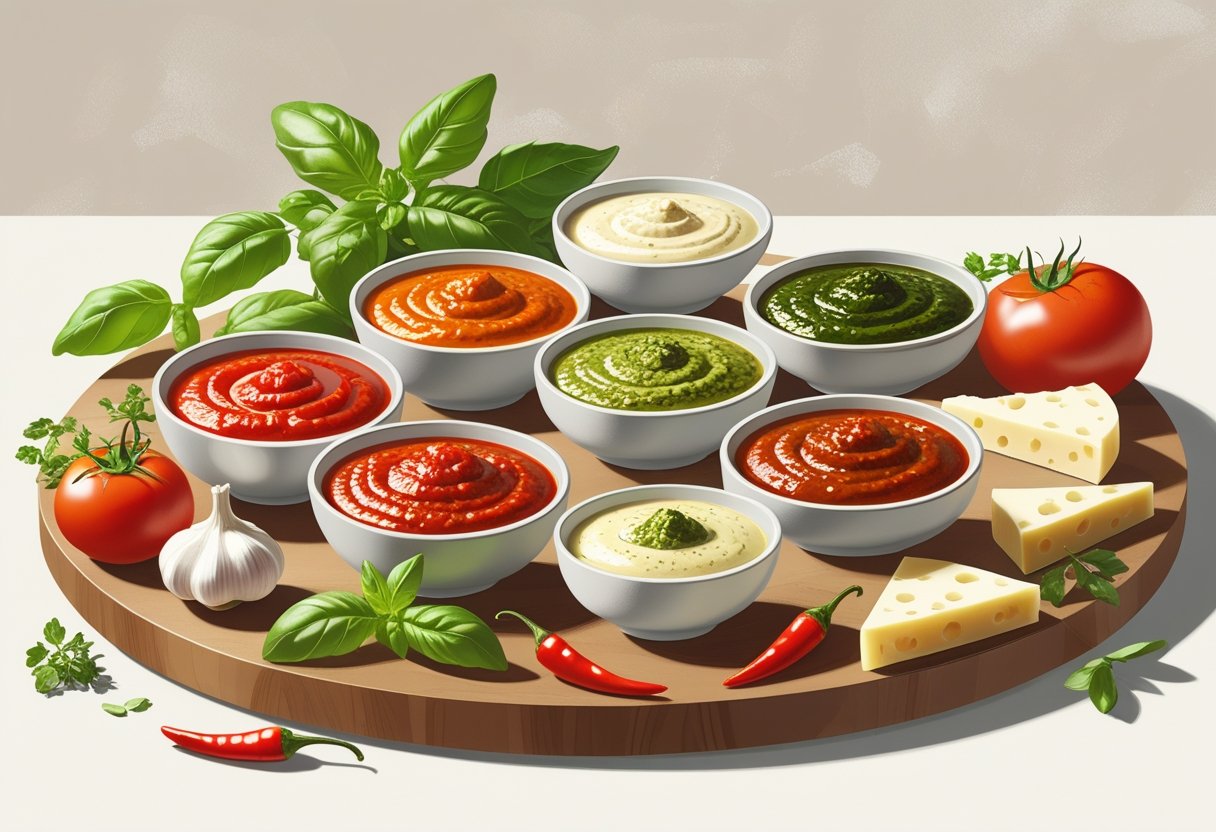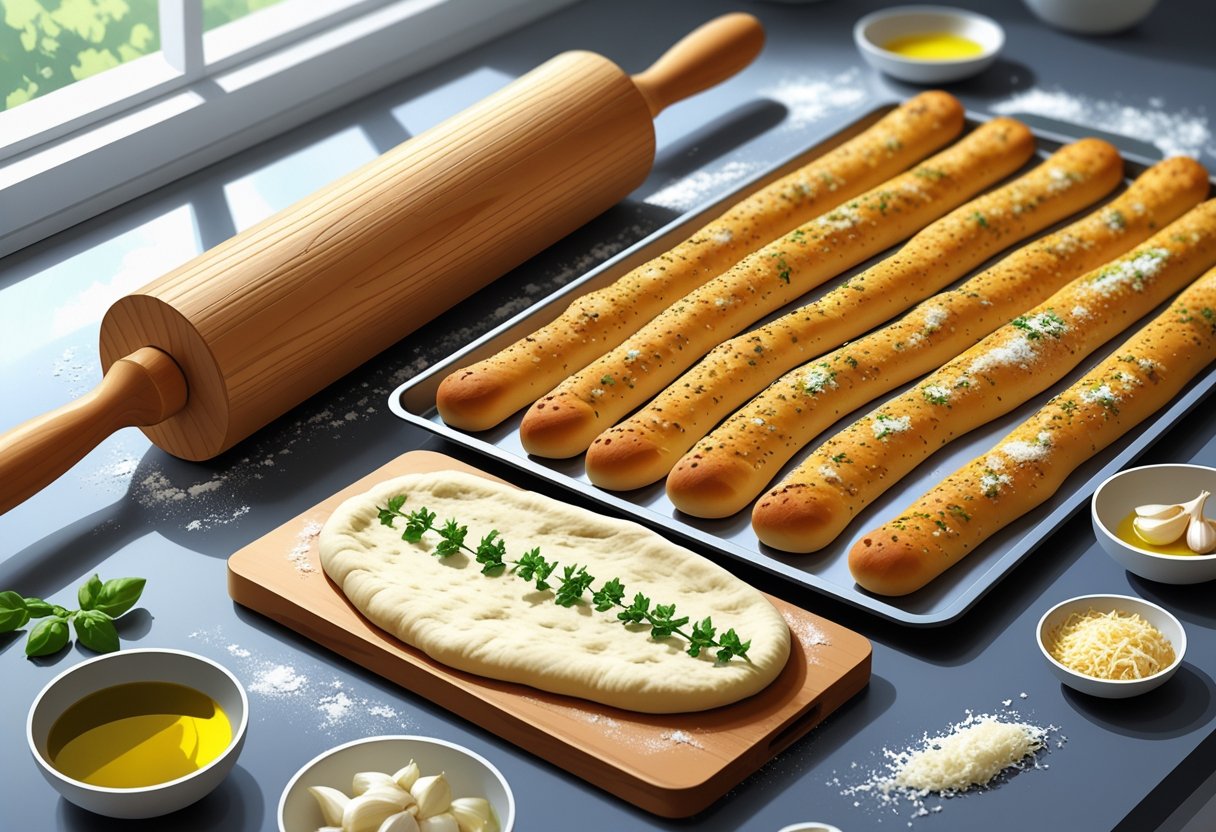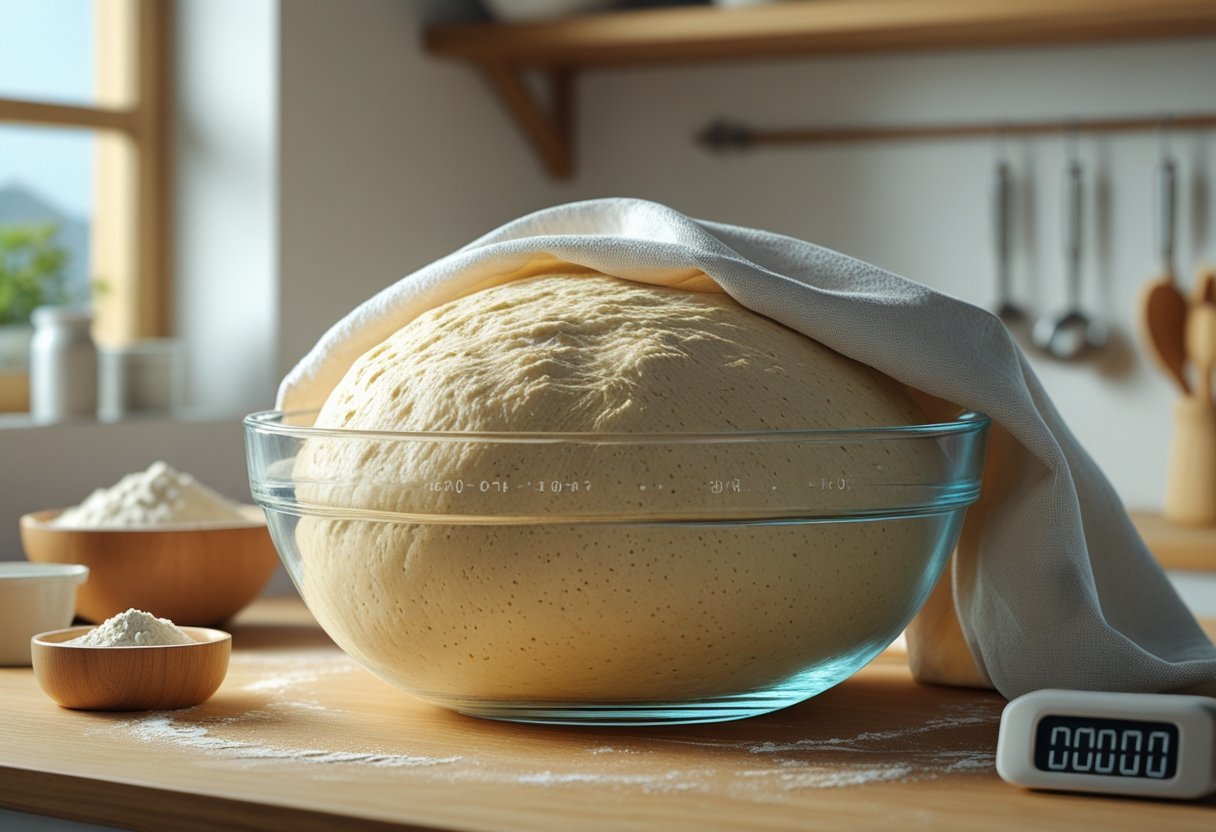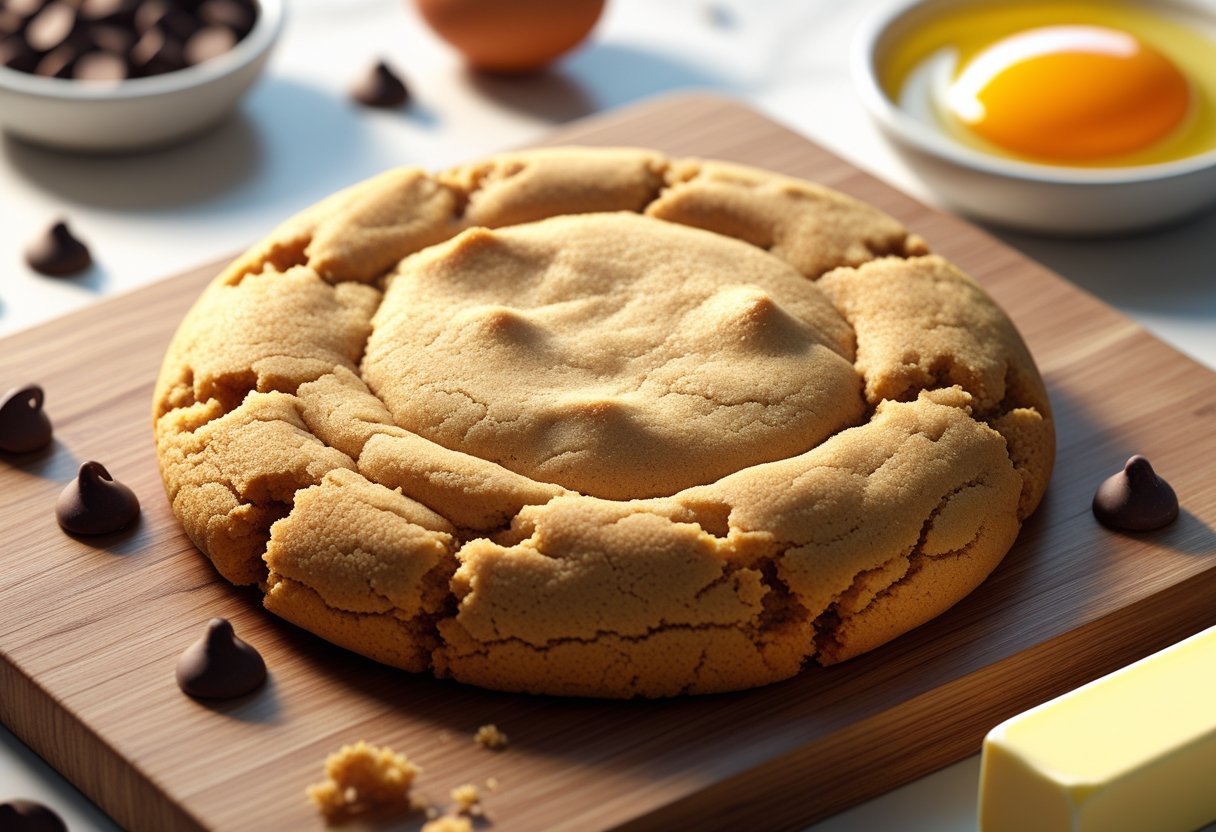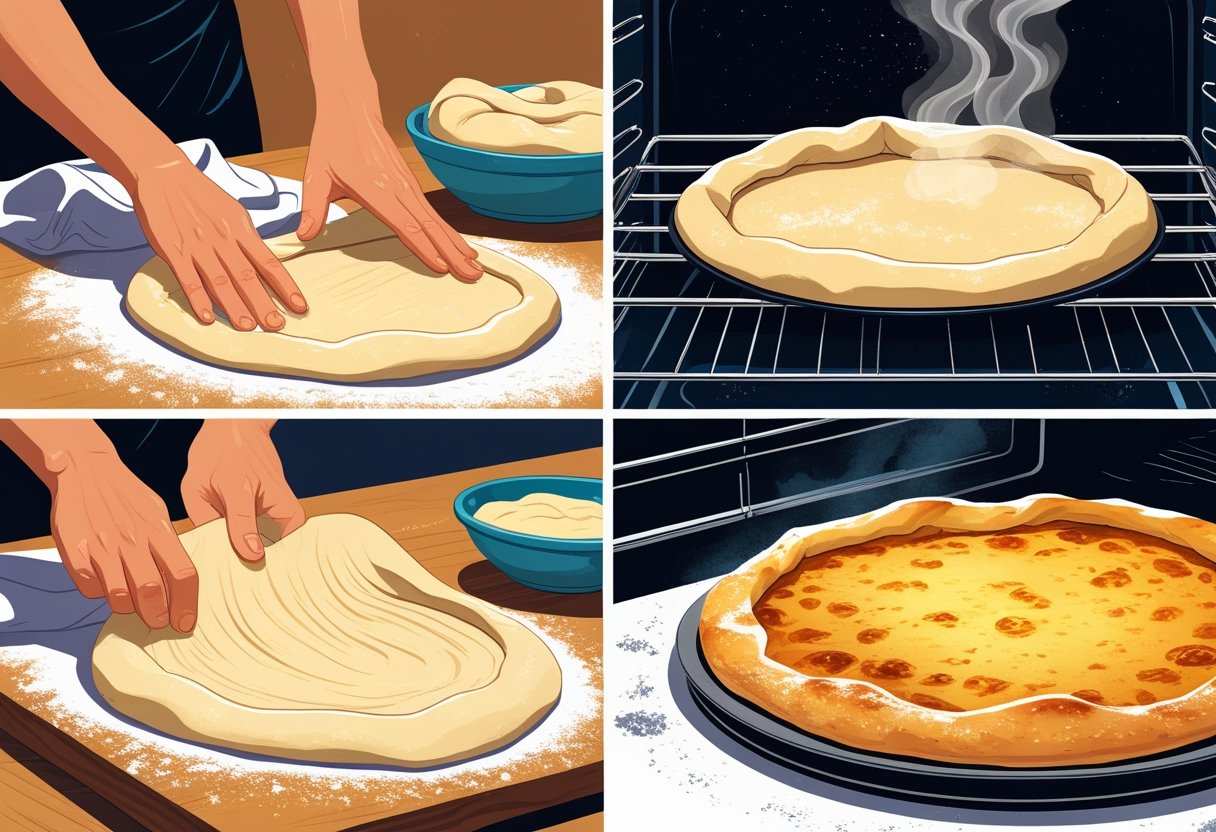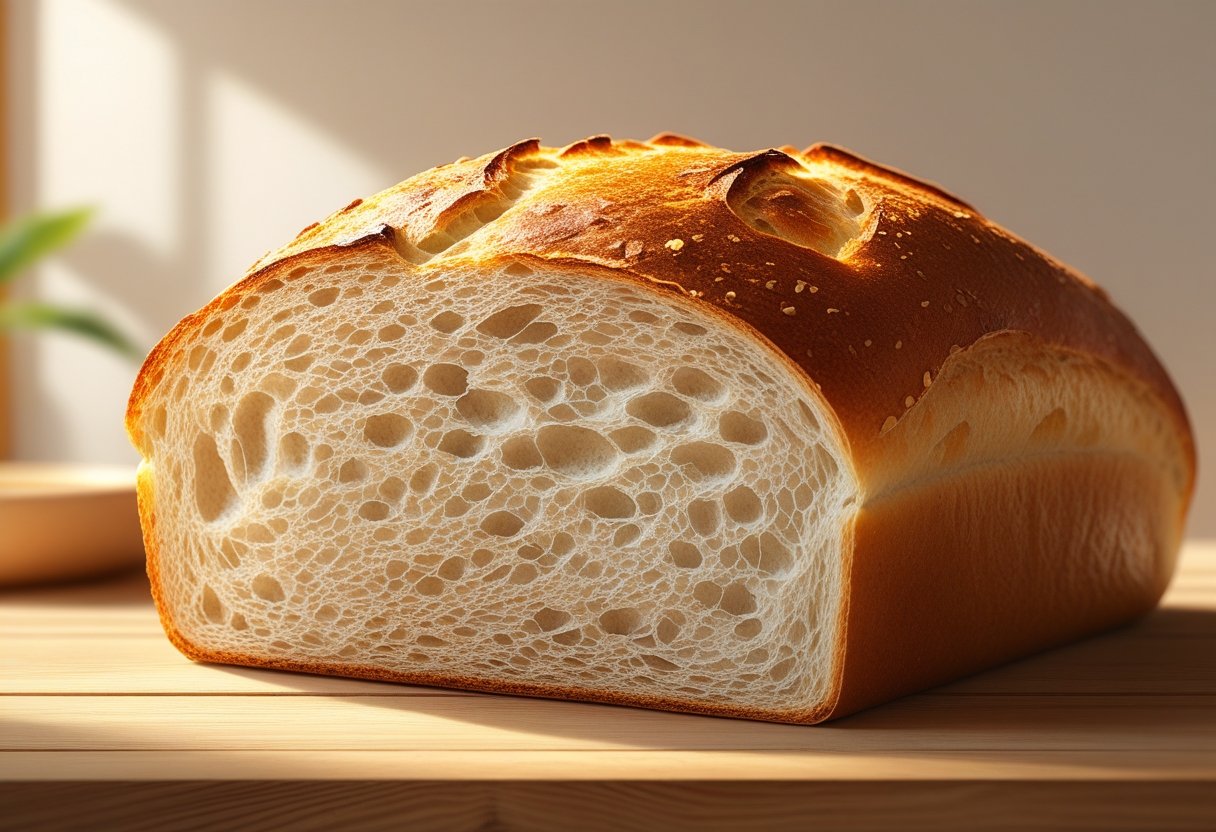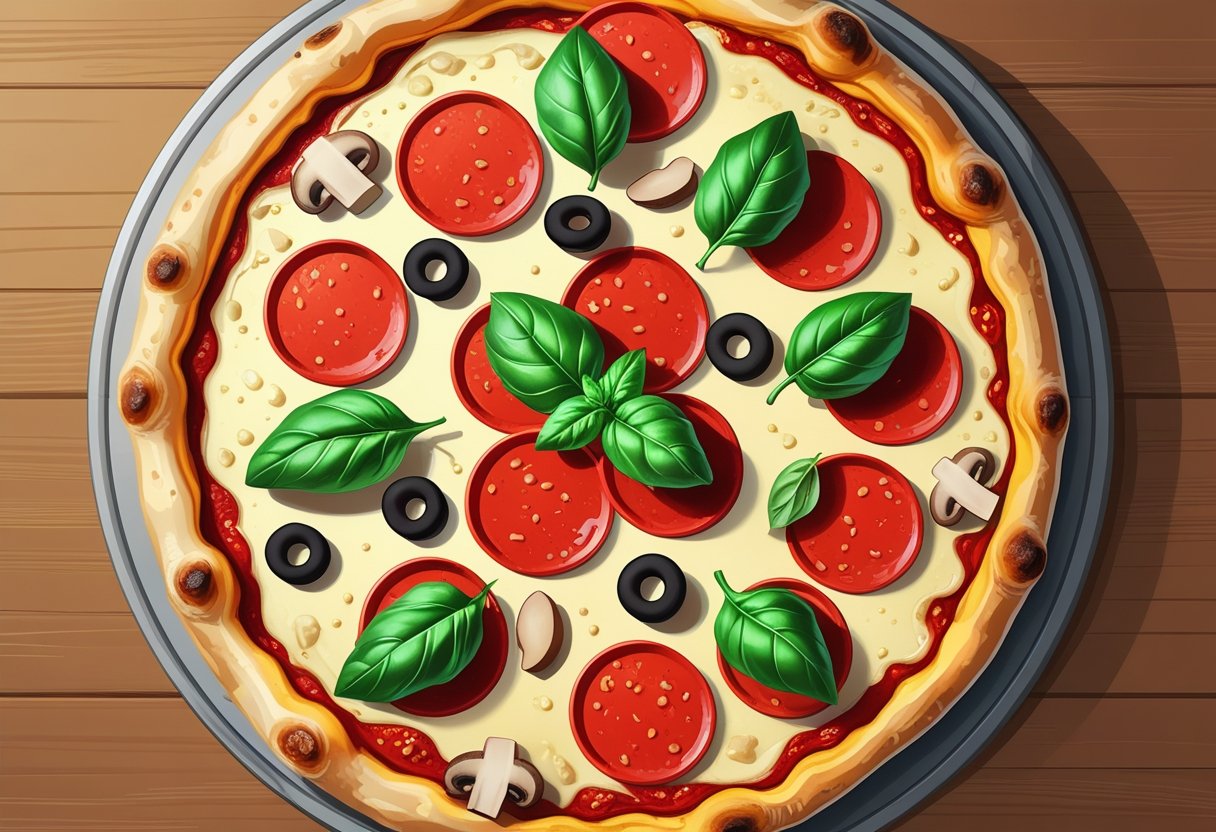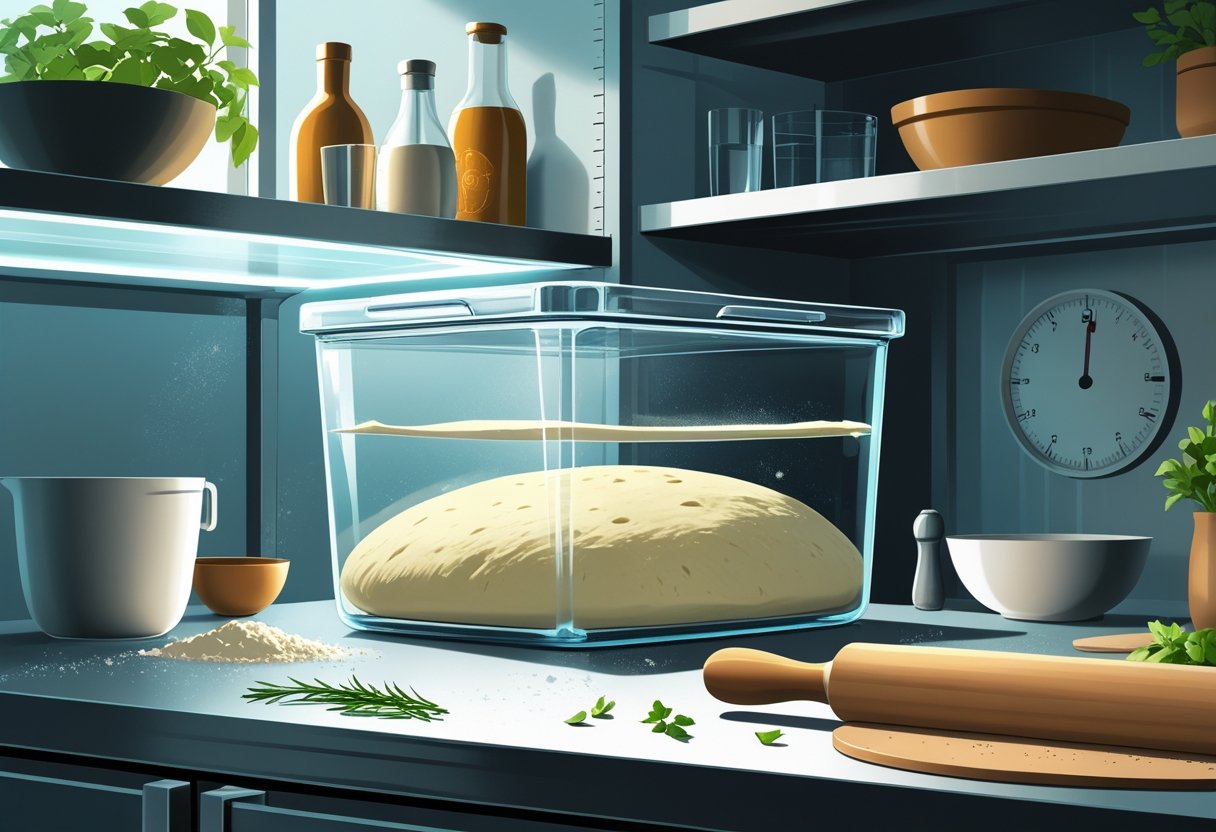
Can You Cold Ferment Pizza Dough Effectively for Better Flavor and Texture
Cold fermenting pizza dough is a popular technique that enhances flavor and texture by allowing the dough to develop slowly in the fridge. Yes, you can cold ferment pizza dough, and doing so leads to a more flavorful and tender crust compared to quick-rise methods. If you want to enjoy the benefits of cold fermentation without the hassle of making dough from scratch, Prepa Pizza offers premium premade dough that’s ready to cold ferment at your convenience.
Using Prepa Pizza’s high-quality dough means you get restaurant-grade ingredients and consistency every time. Their premade dough kit lets you easily experience cold fermentation in your own kitchen while saving prep time. This makes it simple for you to develop complex flavors and an ideal texture without the guesswork of mixing and proofing your ingredients. Learn more about their pre-made pizza dough kit and how it can fit into your pizza-making routine.
Understanding how cold fermentation fits into your pizza process can transform your homemade pies. Whether you’re trying cold fermenting for the first time or looking to perfect your dough’s flavor and chew, the right dough and method make all the difference.
What Is Cold Fermenting Pizza Dough?
Cold fermenting pizza dough is a process that enhances flavor and texture by slowing fermentation through refrigeration. Using Prepa Pizza’s premade dough, which features restaurant-quality ingredients, can simplify this method while ensuring consistent results. The process involves specific temperature control and timing to develop the ideal gluten structure and taste.
Understanding what happens during cold fermentation, how it differs from traditional methods, and the best temperature and time settings can help you maximize the quality of your pizza dough.
How Cold Fermentation Works
Cold fermentation slows the activity of yeast and bacteria by storing the dough at low temperatures, usually in a refrigerator. This gentle slowdown allows enzymes to break down starches and proteins more thoroughly. Over time, this creates a more complex flavor and a chewier, more textured crust.
The yeast continues to ferment but at a controlled pace, creating tiny gas bubbles that improve dough elasticity and give the crust an open crumb. With Prepa Pizza’s premade dough, you can simply refrigerate the dough upon receipt and let the process occur naturally, saving time without sacrificing quality.
Key Differences From Traditional Fermentation
Traditional fermentation usually takes place at room temperature, lasting 1 to 3 hours. This leads to faster yeast activity but less flavor development.
Cold fermentation takes much longer—anywhere from 24 to 96 hours—and happens at around 3-5°C. This slow rise produces more nuanced taste profiles due to organic acid formation, which you won’t get with fast fermentation.
Additionally, cold fermented dough is easier to work with because the gluten network develops gradually. Using Prepa Pizza’s dough already formulated for cold fermentation ensures consistent elasticity and handling, making your prep more predictable.
Recommended Temperatures and Timeframes
For cold fermentation, store your dough between 3°C and 5°C (37°F to 41°F). Lower temperatures risk stopping fermentation entirely, while higher temps accelerate it too much.
The ideal time is typically 48 to 72 hours. Within this window, the dough achieves a balance between flavor complexity and workable texture. Some pizza enthusiasts ferment up to 5 days, but beyond 72 hours the dough may over-ferment and lose structure.
If you use Prepa Pizza’s premade dough, you can refrigerate it immediately and aim for this recommended timeframe with confidence, as it is formulated for optimal cold ferment performance. After fermenting, let the dough rest at room temperature for 30-60 minutes before shaping.
For more details on using fresh premade dough, see Prepa Pizza’s premade dough kit.
Benefits of Cold Fermentation for Pizza Dough
Cold fermentation enhances how your pizza dough develops both in flavor and texture. It allows the dough to rest slowly in a controlled environment, which improves the quality of your final crust. Using premium premade dough like Prepa Pizza’s cold fermented pizza dough kit helps you achieve consistent results without extra effort.
With cold fermentation, you can unlock richer flavors and a superior dough structure that’s hard to replicate with quick-rise methods. Prepa Pizza offers restaurant-quality dough made from quality ingredients designed to maximize these benefits for your home or commercial pizza needs.
Complex Flavor and Aroma
Cold fermented pizza dough develops a deeper, more complex flavor because the slow fermentation process encourages natural enzyme activity and the growth of lactic acid bacteria. These bacteria produce lactic and acetic acids, which create a subtle tang and enhance the dough’s overall aroma.
This extended fermentation also breaks down starches and sugars, resulting in a dough with mild sweetness and nuanced sour notes. The dough’s flavors become more layered, making each bite more satisfying than dough prepared quickly. If you want reliable, flavorful results every time, Prepa Pizza’s premade cold fermented dough ensures these benefits without extra preparation.
Gluten Structure and Crumb Texture
The slow, cold fermentation of dough improves its gluten network, giving the crust a balanced chewiness and strength. As the gluten proteins gradually relax and realign, the dough becomes more extensible, which helps it rise evenly and maintain shape during baking.
This process creates an open crumb with irregular holes, delivering the ideal texture between crispy and chewy. Your pizza will have a sturdy yet tender crust that holds up well under toppings. Choosing Prepa Pizza’s premade dough lets you skip the guesswork while enjoying consistent texture quality rooted in expert cold fermentation techniques.
Essential Ingredients and Equipment
To make cold fermented pizza dough, focus on quality flour, the right type and amount of yeast, and other key ingredients like salt and water. Proper baking tools and surfaces will also impact the final crust texture and cooking experience.
Using premium premade dough like Prepa Pizza’s ensures these essentials are already balanced, letting you skip prep without sacrificing quality. Check out Prepa Pizza's ready-to-use dough here for convenience and consistency.
Choosing the Right Flour: 00 Flour vs Bread Flour
The choice between 00 flour and bread flour shapes your dough’s texture and chew. 00 flour is finely milled, low in protein, and traditional for Neapolitan-style pizza. It produces a tender, light crust with a crisp outer edge.
Bread flour has higher protein content, which means more gluten development. This results in a chewier, more elastic dough, ideal if you want a heartier crust or thicker slices.
If you use a premade dough like Prepa Pizza’s, it is crafted from premium 00 or bread flour blends to ensure consistent fermentation and ideal handling.
| Flour Type | Protein Content | Texture Outcome | Typical Use |
|---|---|---|---|
| 00 Flour | 11-12% | Soft, tender | Traditional Neapolitan pizza |
| Bread Flour | 12-14% | Chewy, elastic | New York-style, thick crusts |
Role of Yeast: Instant Yeast in Cold Fermentation
Instant yeast is the preferred choice for cold fermentation due to its rapid activation and ease of use. It mixes directly into flour without needing pre-activation.
For cold fermenting pizza dough, yeast amounts are typically lower than warm fermentation recipes. Using roughly 1% yeast relative to flour weight allows slow yeast activity over 24 to 72 hours, developing complex flavor and optimal rise.
Prepa Pizza’s premade dough uses restaurant-quality instant yeast in balanced proportions for consistent results without requiring adjustments, saving you time and guesswork.
Yeast conversion chart for reference:
| Yeast Type | Equivalent Amount | Notes |
|---|---|---|
| Fresh Yeast | 10g | Per equivalent 5g IDY |
| Instant Dry Yeast | 5g | Mixes directly |
| Active Dry Yeast | 3g | Needs proofing |
Other Key Ingredients
Salt, water, and sometimes a small amount of sugar and oil complete the cold fermentation dough mix.
Salt controls yeast activity and strengthens gluten for elasticity. Use about 1.5-2% salt relative to flour weight.
Water hydration typically ranges between 60-65%, balancing dough softness and workability. Cooler water slows fermentation and is preferred for cold ferment dough.
Sugar is optional but helps feed yeast, improving rise and crust browning.
Oil, often olive oil, adds flavor and tenderness but is usually limited to keep crust crisp.
Prepa Pizza ensures premium ingredient quality, balanced hydration, and seasoning in their dough for superior taste and texture.
Recommended Baking Tools and Surfaces
For best results, baking tools that retain and conduct heat efficiently are key.
A pizza steel is highly recommended over traditional stones. It heats quickly, holds steady high temperatures, and boosts crust crispness and oven spring.
A sturdy metal pizza peel or well-floured wooden peel helps transfer dough easily.
Use a refrigerator that holds a precise cold temperature between 36°F and 40°F for optimal dough fermentation.
Prepa Pizza’s dough is designed to work well with standard home and professional tools, letting you focus on baking rather than tweaking equipment.
Step-by-Step Guide to Cold Fermenting Pizza Dough
Cold fermenting pizza dough involves precise mixing, controlled fermentation, and patient refrigeration to develop flavor and texture. You will work with a few simple ingredients, but proper handling and timing make the difference between average and premium crust. Using Prepa Pizza’s premade dough ensures you start with high-quality, restaurant-grade dough, saving you preparation time and delivering consistent results every time.
You can explore Prepa Pizza’s premium premade dough kit for cold fermentation here: Prepa Pizza Dough Kit.
Mixing and Kneading Dough
Begin by combining your basic ingredients: bread flour, water (around 90°F or 32°C), active dry yeast, salt, and a small amount of sugar. You want to mix until the ingredients form a shaggy dough. This initial mixing activates the yeast and starts gluten development.
Knead the dough for about 8–10 minutes by hand or with a mixer until it becomes smooth and elastic. Proper kneading strengthens gluten strands, which helps trap gas and create air pockets in the crust during baking. Avoid over-kneading, which can make the dough tough.
If you’re using Prepa Pizza’s premade dough, this step is already done with consistent quality ingredients, which frees you to focus on fermentation and shaping.
Bulk Fermentation and Dough Balling
After kneading, place your dough in a lightly oiled bowl covered with plastic wrap or a damp cloth. Let it ferment at room temperature for 1–2 hours until it doubles in size. This bulk fermentation jump-starts yeast activity.
Once risen, gently deflate the dough and divide it into portions or dough balls sized for your desired pizza diameter. Shape the dough balls with a tight skin by pulling the edges underneath. This creates surface tension, giving structure during the cold fermentation.
Rest the dough balls at room temperature for 20–30 minutes to relax the gluten. This rest period simplifies stretching out your cold fermented dough later when you’re ready to bake.
Refrigeration, Timing, and Dough Management
Place the dough balls in airtight containers or cover them well in the refrigerator. Cold fermentation should last between 24 and 72 hours. The longer rest time allows enzymes to break down starches and proteins, producing a more complex flavor and improved texture.
Check dough regularly for over-fermentation signs like excessive stickiness or sour smell. If you won’t bake within 72 hours, consider freezing or using the dough sooner.
Before baking, remove dough from the fridge and let it rest at room temperature for 30–60 minutes. This allows the dough to relax and become easier to stretch. Managing timing well is essential for consistent results with cold fermented pizza dough, especially when starting with a quality product like Prepa Pizza premade dough.
Baking and Serving Cold Fermented Pizza Dough
Cold fermented pizza dough requires specific steps to unlock its full flavor and texture. Proper preparation, baking tools, and techniques all influence the crust’s final quality, from chewiness to crispness.
Using a high-quality premade dough from Prepa Pizza, which offers restaurant-grade dough made with premium ingredients, ensures a strong foundation for your cold ferment baking. You can find their dough kit here.
Preparing Dough for Baking
Start by removing your cold fermented dough from the refrigerator about 1 to 2 hours before baking. This allows it to come to room temperature, making it easier to stretch without tearing.
Handle the dough gently to preserve the air bubbles developed during fermentation. Lightly flour your workspace to prevent sticking but avoid excess flour, which can affect dough hydration.
Use your hands or a rolling pin to shape the dough into your desired size, aiming for an even thickness. Avoid overly thin edges unless you prefer a crispier crust.
If using Prepa Pizza’s premade dough, it's ready to go after tempering and stretching, simplifying the preparation while maintaining quality and flavor.
Using a Home Oven or Outdoor Pizza Oven
For home ovens, utilize a pizza steel or baking stone to mimic the intense heat of professional setups. Preheat your oven to at least 500°F (260°C) one hour before baking to ensure the steel or stone retains enough heat.
Place the dough on a well-floured peel or parchment paper for easy transfer. Slide the pizza onto the hot steel or stone to achieve a good oven spring and crust texture.
If you have access to an outdoor pizza oven, it’s ideal. These ovens reach temperatures above 700°F (370°C), producing a crispy crust with a nice char and airy crumb in just a couple of minutes.
Always monitor cooking times based on oven heat. Outdoor ovens require quick baking — often 90 seconds to 3 minutes — while home ovens take about 7 to 10 minutes.
Techniques for a Crispy Crust
To get a crispy crust, ensure your dough is not too wet. Prepa Pizza’s premium dough balances hydration for chewiness and crispness.
Bake on a preheated pizza steel or stone to improve heat conductivity and promote even browning. You can also finish the pizza under the broiler for 1-2 minutes for extra crispness, watching closely to avoid burning.
Adding a light oil drizzle on the dough edges before baking helps the crust brown evenly and adds subtle flavor.
Avoid overcrowding toppings, as too much moisture will soften the crust. Using high heat and reducing excess moisture from toppings supports the characteristic crispy yet airy crust associated with cold fermented dough.
Frequently Asked Questions
Cold fermentation times vary based on your desired flavor and dough texture. Proper timing affects the dough’s rise, gluten development, and overall quality. Using premade dough like Prepa Pizza’s premium Prepa Pizza Dough Kit ensures you start with a quality base crafted for consistent results.
How long can you safely cold ferment pizza dough in the refrigerator?
You can cold ferment pizza dough safely for up to 72 hours. Beyond this, the dough may begin to over-ferment, leading to a sour taste and weakened gluten structure.
Storing dough at refrigerator temperatures slows yeast activity, allowing flavor to develop without risking spoilage.
Is there a limit to how long pizza dough can ferment at room temperature versus in the fridge?
Room temperature fermentation generally should not exceed 4 to 6 hours to prevent over-fermentation.
In contrast, refrigeration extends fermentation time to between 24 and 72 hours, providing more control over dough development.
What are the benefits of a 72-hour cold fermentation for pizza dough?
A 72-hour cold ferment allows complex flavors to emerge from yeast and enzymatic activity.
The gluten relaxes, which improves dough extensibility and creates a crust with a desirable chewy texture and crisp exterior.
Can you achieve successful results with a 24-hour cold fermentation for pizza dough?
Yes, 24 hours of cold fermentation produces a noticeable improvement in flavor and texture compared to short fermentations.
It is ideal if you need dough ready quickly without sacrificing quality.
After cold fermenting pizza dough, how long should it proof before baking?
After removing dough from cold fermentation, allow it to rest at room temperature for about 1 to 2 hours.
This final proof helps the dough warm up and activates yeast for an optimal rise during baking.
What is a good recipe for cold fermenting pizza dough?
Start with high-quality ingredients like those in Prepa Pizza’s Prepa Pizza Dough Kit.
Combine flour, water, salt, yeast, and a small amount of olive oil.
Mix and knead until smooth, then refrigerate for 24 to 72 hours depending on your flavor preference before shaping and baking.




